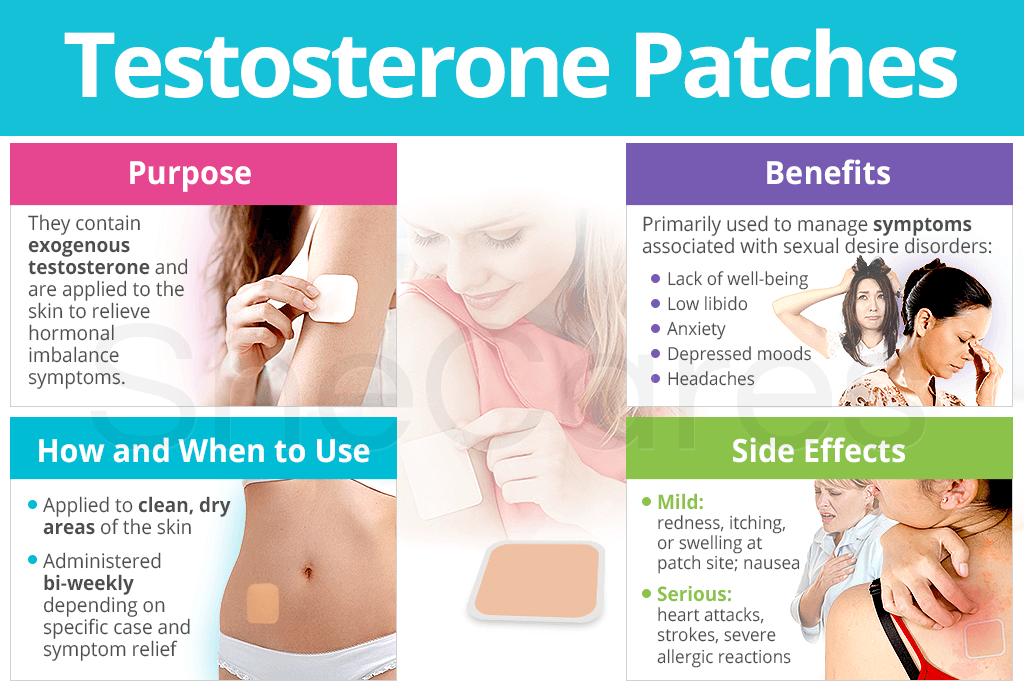Testosterone therapy includes oral, injectable, and transdermal options. Without a doubt, many women overlook testosterone patches as a possible treatment option for them.
Continue reading to discover necessary information about testosterone patches, such as what they are, their benefits, side effects, how to use them, and more.
What are Testosterone Patches?
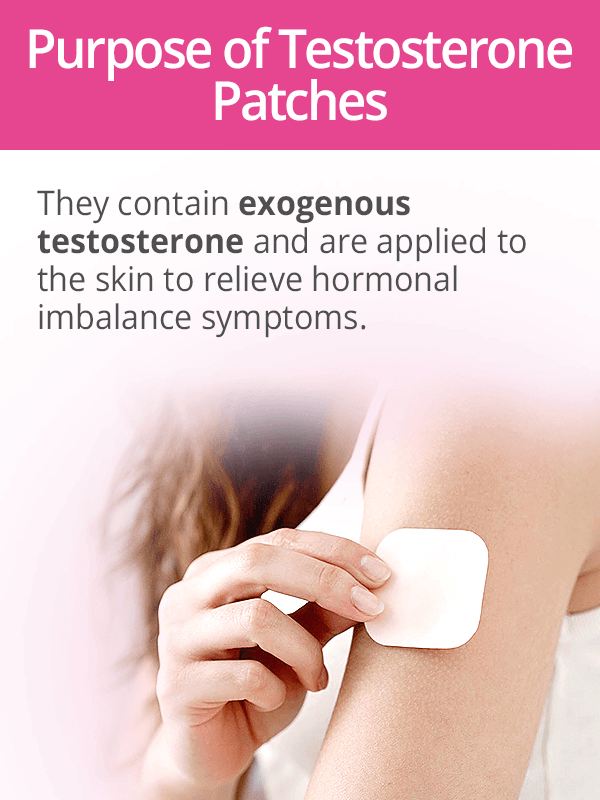
Transdermal testosterone contains exogenous amounts of the hormone that is applied to the skin in attempt to make up for a deficiency that could be causing various symptoms of hormonal imbalance.
When Could the Use of Testosterone Patches Prove Helpful?
In surgically menopausal women, the use of transdermal testosterone has proven scientifically useful by improving sexual function and decreasing distress in those suffering from hypoactive sexual desire disorder (HSDD).
Even though non-oral testosterone does not adversely affect the liver or increase clotting factors, like its oral counterpart can, testosterone patches are not generally prescribed to women outside of the menopausal transition.
Testosterone Patches Benefits
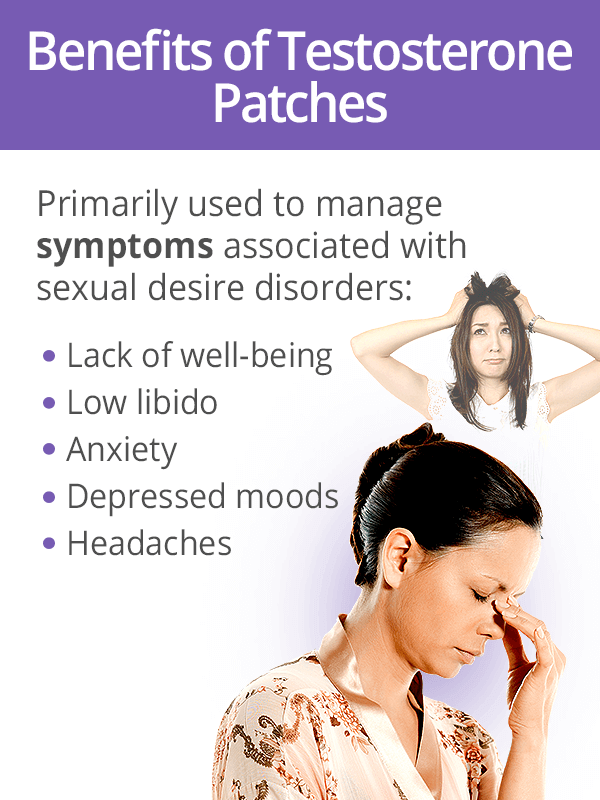
Transdermal testosterone is used to manage sexual desire disorders in addition to other symptoms of low testosterone. These include:
- Lack of well-being
- Headaches
- Low libido
- Unexplainable fatigue
- Anxiety
- Diminished sexual arousal
- Depressed moods
- And more
How and When to Use a Testosterone Patch
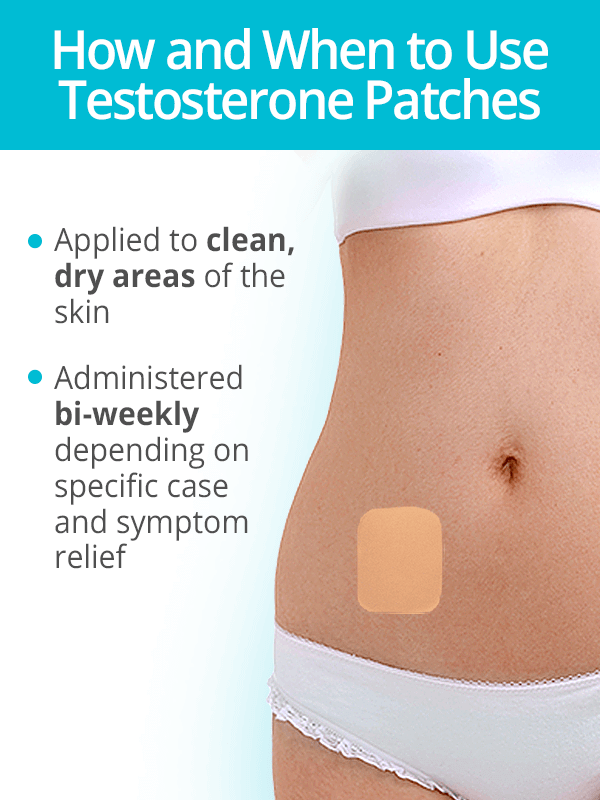
How Do I Apply It?
Testosterone patches should be applied to clean, dry areas of the skin on the back, abdomen, thighs, or upper arm. Avoid placing the patch on hairy body parts, bony areas, or genital areas as it may not stick properly. When replacing an old patch, make sure to apply the new one on a different area in order to distribute the absorption more evenly.
Also, after using transdermal testosterone, wait for at least three hours before allowing water to come in contact with the patch. This also counts for any activity that results in excessive sweating.
Patches should not be cut. Apply the patch as is for the suggested dosage from the doctor.
When Do I Use It?
The exact treatment schedule will depend upon a variety of factors: strength of patch, number of doses, length of treatment, and time allowed between doses, to name a few.
For example, postmenopausal women using the testosterone patch for androgen replacement therapy may apply a standard dose of 150 micrograms twice weekly.
Testosterone Patches Side Effects
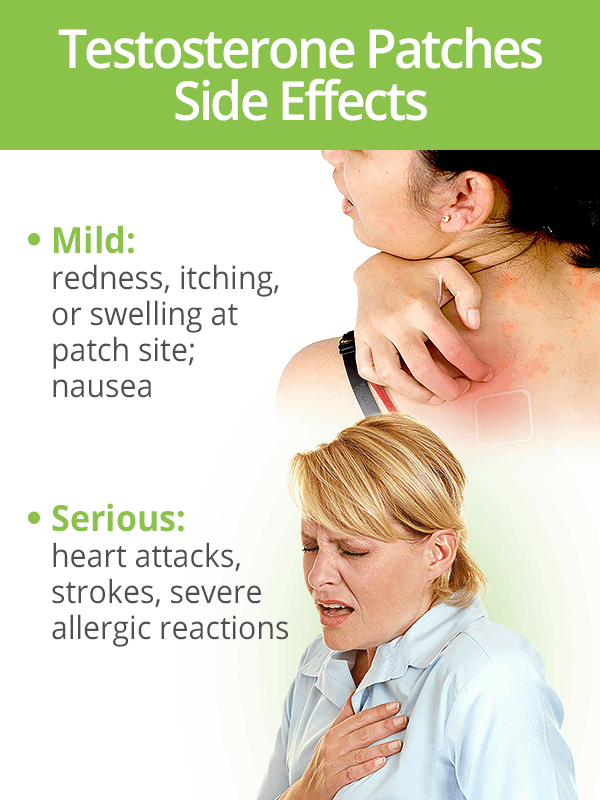
In general, doctors are hesitant to prescribe transdermal testosterone patches because there is uncertainty over the exact amounts absorbed in comparison to other testosterone medicines.
Some mild side effects include redness, itching, or swelling at the patch site; nausea; dizziness; vomiting; breast swelling; and more. If women have been taking testosterone for too long, they may develop male characteristics such as hirsutism, voice hoarseness, and acne as well as menstrual cycle changes or an enlarged clitoris.
For specific use, testosterone patches are not recommended for women who are pregnant or may become pregnant as it may cause birth defects. Also, women who are breastfeeding should not use testosterone patches either.
More severe side effects of using transdermal testosterone include risk of heart attacks, strokes, severe allergic reactions, alopecia, changes in cholesterol levels, vision disturbances, confusion, and more.
Where Do I Buy Testosterone Patches?
Testosterone patches are available by prescription from a doctor. For proper and safe usage, follow instructions provided and appropriate doses, and return for regular check-ups to monitor treatment progress.
Key Takeaways
All in all, testosterone patches are a transdermal option for androgen replacement therapy. Little is known about this testosterone medication because it is not normally prescribed to women. Nevertheless, its proper use allows menopausal women to improve sexual function as well as mood. These patches are applied to clean, dry areas of the skin in rotating locations a couple times a week. Mild side effects include redness, itching, or swelling at the application site; nausea; vomiting; and breast swelling while more severe side effects include increased risk of heart attacks, strokes, vision changes, and more. Always use testosterone patches under the supervision of a doctor for the safest, best results.
Aside from the risky pharmaceutical options, find out which natural testosterone supplements and boosters have also proven successful in managing hormonal imbalance symptoms.
Sources
- Basson, R. (2010). Testosterone therapy for reduced libido in women. Therapeutic Advances in Endocrinology and Metabolism, 1(4), 155-164. doi: 10.1177/2042018810379588
- Glaser, R. & Dimitrakakis, C. (2013). Testosterone therapy in women: Myths and misconceptions. Maturitas, 74(3), 230-234. doi: 10.1016/j.maturitas.2013.01.003
- Mayo Clinic. (2018). Testosterone (Transdermal Route): Proper Use | Precautions | Side Effects. Retrieved September 5, 2018, from https://www.mayoclinic.org/drugs-supplements/testosterone-transdermal-route/proper-use/drg-20068985 | https://www.mayoclinic.org/drugs-supplements/testosterone-transdermal-route/precautions/drg-20068985 | https://www.mayoclinic.org/drugs-supplements/testosterone-transdermal-route/side-effects/drg-20068985
- Morley, J.E. & Perry, H.M. (2003). Androgens and Women at the Menopause and Beyond. The Journal of Gerontology: Series A, 58(5), M409-M416. doi: 10.1093/gerona/58.5.M409
- Simon, J. et al. (2005). Testosterone patch increases sexual activity and desire in surgically menopausal women with hypoactive sexual desire disorder. The Journal of Clinical Endocrinology and Metabolism, 90(9), 5226-5233. doi: 10.1210/jc.2004-1747
